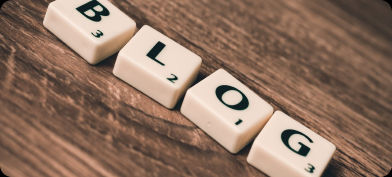
Must-read Blogs
Access reliable & authentic articles on international education
Read Blogs
The multifaceted area of product design entails the methodical and creative process of developing new product concepts and bringing them into existence. It covers the full process of developing a product, from conception and design to manufacturing and marketing. Product designers combine technological know-how with artistic creativity to produce goods that are useful, beautiful, and easy to use. The process of developing a good, service, or experience is called product design. It entails:
Product design is a blend of Research, Strategy, Industry knowledge, and Creative thinking. Product design can be applied to many fields, including:
Some popular product design courses are-
· Master of Fine Arts (MFA) in Product Design
· Master of Science (MS) in Industrial Design
· Bachelor of Arts (BA) in Product Design
· Bachelor of Science (BS) in Industrial Design
University |
Popular Product Design Courses Offered |
World Ranking (QS) |
Subject Ranking |
| Massachusetts Institute of Technology (MIT) | - MFA in Product Design - MS in Design and Computation | #1 | 1st |
| Royal College of Art, London | - MA in Design Products | #2 | 1st |
| Stanford University | - MS in Mechanical Engineering: Design Impact - MFA in Art Practice: Design | #5 | 2nd |
| Rhode Island School of Design | - BFA in Industrial Design | #7 | 1st |
| Pratt Institute | - BFA in Industrial Design | #6 | 2nd |
| Delft University of Technology | - MSc in Integrated Product Design | #47 | 1st |
| Politecnico di Milano | - MS in Product Service System Design - BS in Product Design Engineering | #123 | 2nd |
| Carnegie Mellon University | - Master of Integrated Innovation for Products and Services (MIIPS) | #52 | 3rd |
| University of California, Berkeley | - BS in Mechanical Engineering: Design - MFA in Art Practice: Design | #10 | 4th |
| Eindhoven University of Technology | - Master in Innovation Management: Product Design | #124 | 2nd |
In conclusion, product design shapes how we engage with the environment by bridging creativity, innovation, and functionality. This innovative industry merges creativity and technology, giving students the chance to create goods that not only satisfy people's needs but also excite and delight them. Through rigorous academic programs at leading universities worldwide, aspiring product designers are equipped with the skills and knowledge necessary to navigate the complexities of modern design challenges.
The demand for product designers is significant across a variety of sectors, including consumer electronics, automotive, furniture, and fashion. They are essential for developing cutting-edge products, improving user experiences, and boosting market competition. The process of locating a market opportunity and creating a product to address a specific issue is known as product design. It now involves UI/UX design, graphic design, and animation, among others. Product designers create tangible software, whereas service designers create intangible experiences.
Product design demands a blend of creativity, technical skills, and analytical thinking. While challenging, students passionate about design find the field deeply rewarding. It demands commitment and a readiness to pick up on new information and trends. It's a common notion that obtaining a degree or diploma in product design is simple; however, this is untrue. That's because of how many different skills a product designer will need. Despite the misnomer of the title, being a product designer is much more than simply designing products.
Countries like the USA, UK, Netherlands, and Italy are renowned for their top-tier universities offering excellent product design programs. The choice of country often depends on individual preferences, language proficiency, and career goals.
It is simpler for students to transfer into product design programs if they have prior training in the arts, engineering, industrial design, or related subjects. Regardless of the initial academic background, what matters most is a love for creativity, invention, and problem-solving. Manufacturing principles, psychology, sociology, finance, the use of materials, and organisational behaviour are a few of the best subjects for product design.